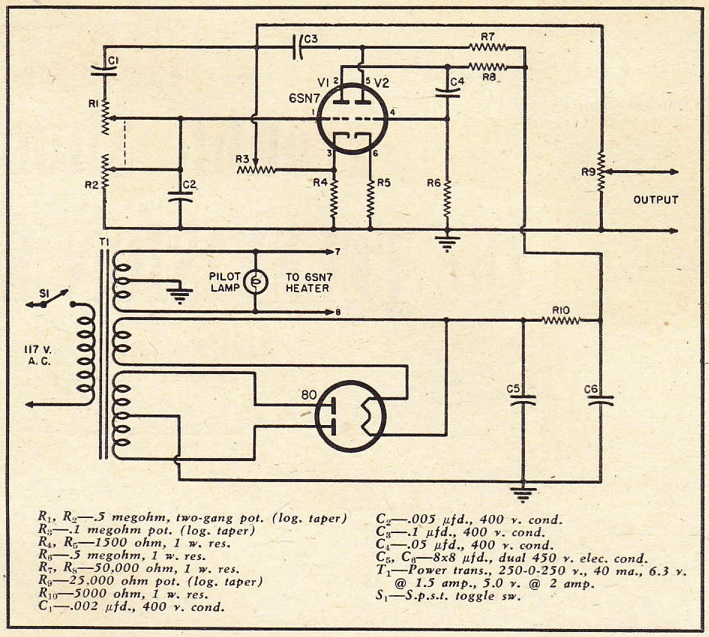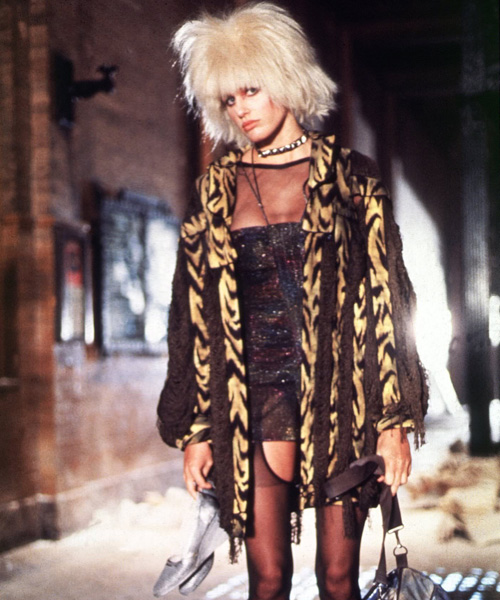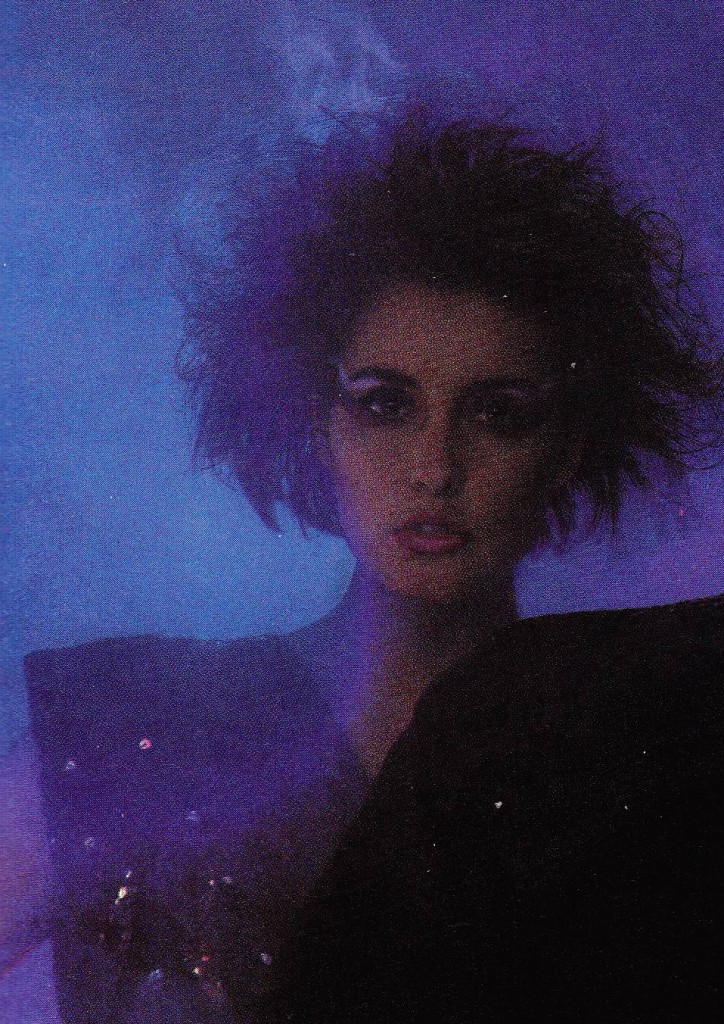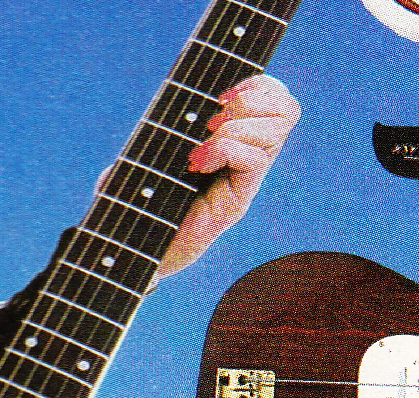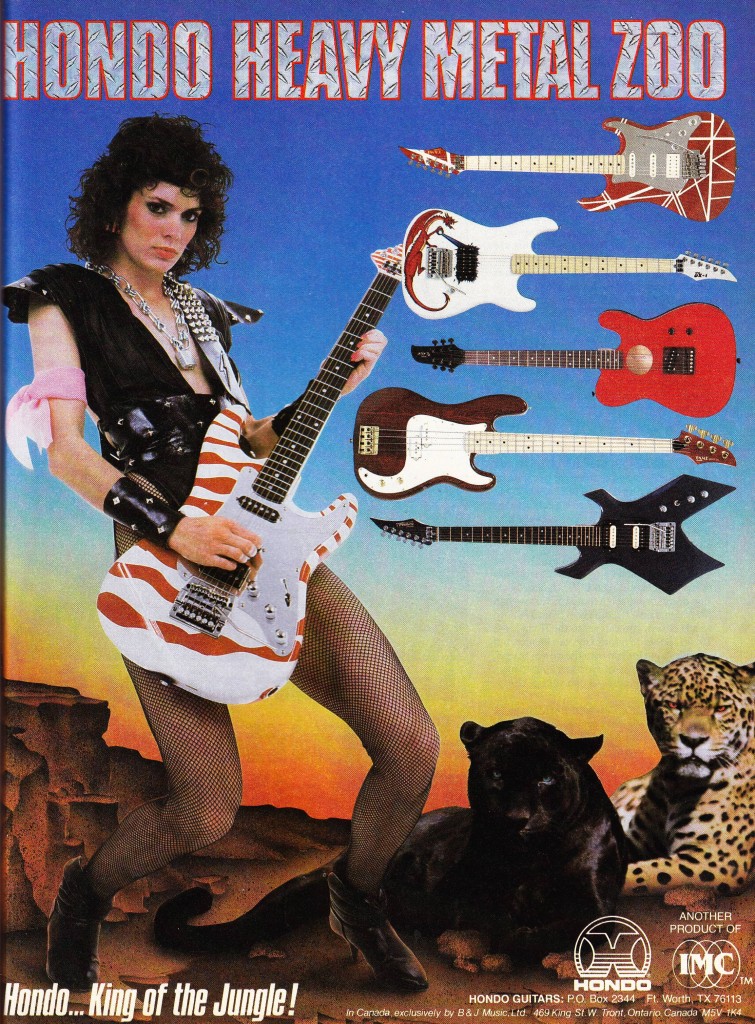 Happy Holidays y’all. I’ll be joining my good friend JBW aka Sway behind the 1200s at Firehouse 12 in New Haven again this Wednesday 12.19.12. Got a whole new set ready for this one. 45 Crown Street New Haven, CT.
Happy Holidays y’all. I’ll be joining my good friend JBW aka Sway behind the 1200s at Firehouse 12 in New Haven again this Wednesday 12.19.12. Got a whole new set ready for this one. 45 Crown Street New Haven, CT.
Demo! (first in a series)
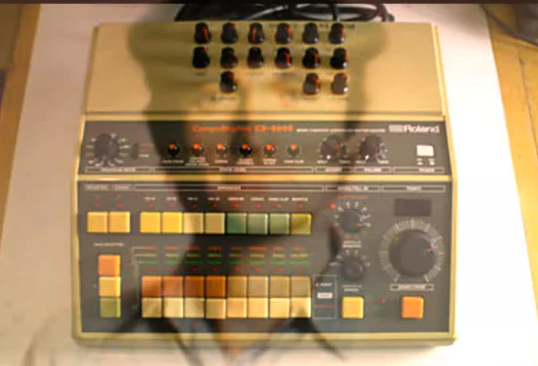 A Roland CR-8000, a piano, a shit-tonne of echo, and Phil Collins circa 1980. Sounds incredibly modern. Click here or watch below. I had a CR-8000 alongside my TR-606 for some years; I had it midi sync’d via my MSQ-700. I still have the MSQ and the TR, but the CR-8000 was transmuted into ‘RENT’ sometime around 2001. Miss it. I paid $25 for it at ALTEL on Main Street in Bridgeport; they are tough to find for under $500 these days.
A Roland CR-8000, a piano, a shit-tonne of echo, and Phil Collins circa 1980. Sounds incredibly modern. Click here or watch below. I had a CR-8000 alongside my TR-606 for some years; I had it midi sync’d via my MSQ-700. I still have the MSQ and the TR, but the CR-8000 was transmuted into ‘RENT’ sometime around 2001. Miss it. I paid $25 for it at ALTEL on Main Street in Bridgeport; they are tough to find for under $500 these days.
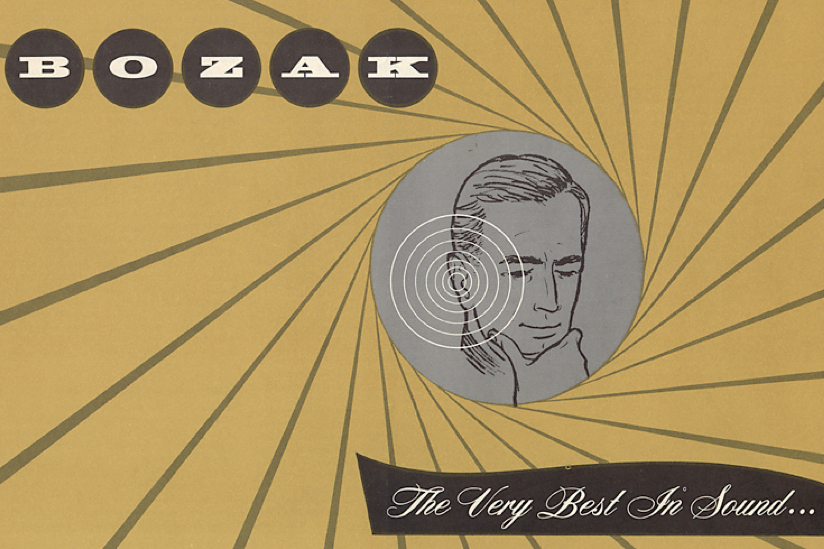 Courtesy of reader T.F., download the complete 1958 Bozak speaker catalog. BTW, I am trying the PNG graphics format for the first time, so if this post displays incorrectly please let me know in the comments section.
Courtesy of reader T.F., download the complete 1958 Bozak speaker catalog. BTW, I am trying the PNG graphics format for the first time, so if this post displays incorrectly please let me know in the comments section.
DOWNLOAD: 1958
Products covered include the Bozak B-400, B-300, B-305, B-310, and B-302 hi fi speaker systems, as well as the B-199A, B-209, B-200x, B-207A, and B-200xA drivers. Bozak N-10102, N-103, and N-104 crossovers are also described. Bozak apparently also offered all of their 1958 systems as baffle-only, intended for custom installation work…
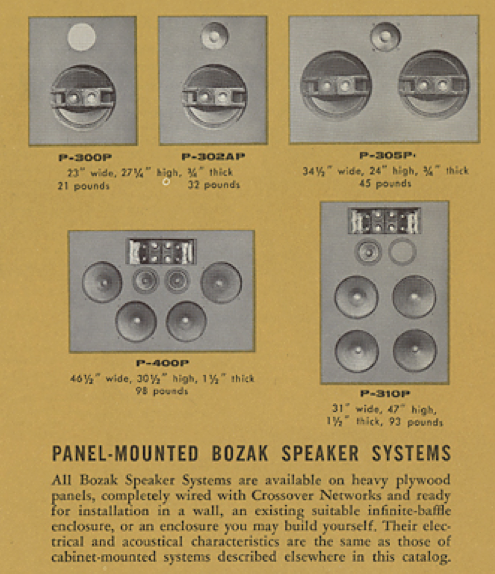 Bozak was a CT -based operation and we’re proud to have had ’em. Click this link for our scan of the 1970 Bozak catalog.
Bozak was a CT -based operation and we’re proud to have had ’em. Click this link for our scan of the 1970 Bozak catalog.
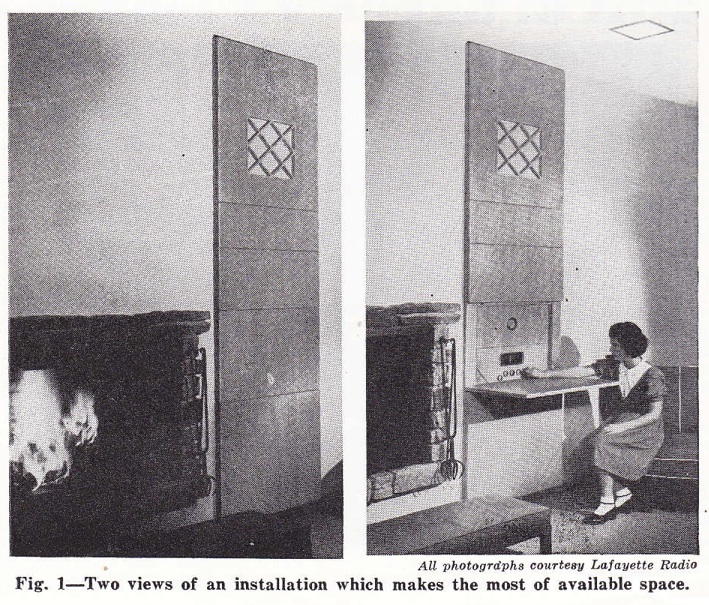 Since we’re on the subject of antique hi-fi installs… download a three-page article from RADIO-ELECTRONICS, April 1950, on the subject of the burgeoning custom-installation business for hifi equipment (via opportunities-await-you). Author is one William Rivkin.
Since we’re on the subject of antique hi-fi installs… download a three-page article from RADIO-ELECTRONICS, April 1950, on the subject of the burgeoning custom-installation business for hifi equipment (via opportunities-await-you). Author is one William Rivkin.
DOWNLOAD: CustomHiFi_1950
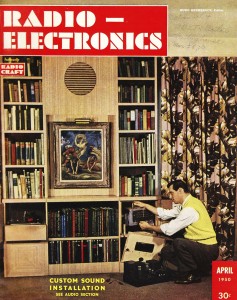 When I was a child my family moved into a circa 1930s home (renovated circa 1965) that had one of these custom installs. I can’t recall what brand of drivers were installed, but the amp was a Harmon-Kardon, stereo, with (I think…) 6BQ5s. The Ttable was likely a Garrard. I really think that the particular smell that the amp made was one the things that fascinated me the most about it; shortly thereafter I picked out my first guitar amp (thanks Mom+Dad), an excellent-sounding brand-new Fender Champ 12. I remember the gtr-store salesmen being completely shocked that a child wanted a tube amp, rather than something with Mega-Distortion and Chorus; perhaps I should have told him that I was attracted to the smell. The Harmon Kardon, I believe, I gave away to a high-school classmate named Matt Tebbe; Matt, if yr still out there, drop us a line and let us know if you stuck with the tube thing. I definitely have…
When I was a child my family moved into a circa 1930s home (renovated circa 1965) that had one of these custom installs. I can’t recall what brand of drivers were installed, but the amp was a Harmon-Kardon, stereo, with (I think…) 6BQ5s. The Ttable was likely a Garrard. I really think that the particular smell that the amp made was one the things that fascinated me the most about it; shortly thereafter I picked out my first guitar amp (thanks Mom+Dad), an excellent-sounding brand-new Fender Champ 12. I remember the gtr-store salesmen being completely shocked that a child wanted a tube amp, rather than something with Mega-Distortion and Chorus; perhaps I should have told him that I was attracted to the smell. The Harmon Kardon, I believe, I gave away to a high-school classmate named Matt Tebbe; Matt, if yr still out there, drop us a line and let us know if you stuck with the tube thing. I definitely have…
Single-tube audio oscillator c. 1946
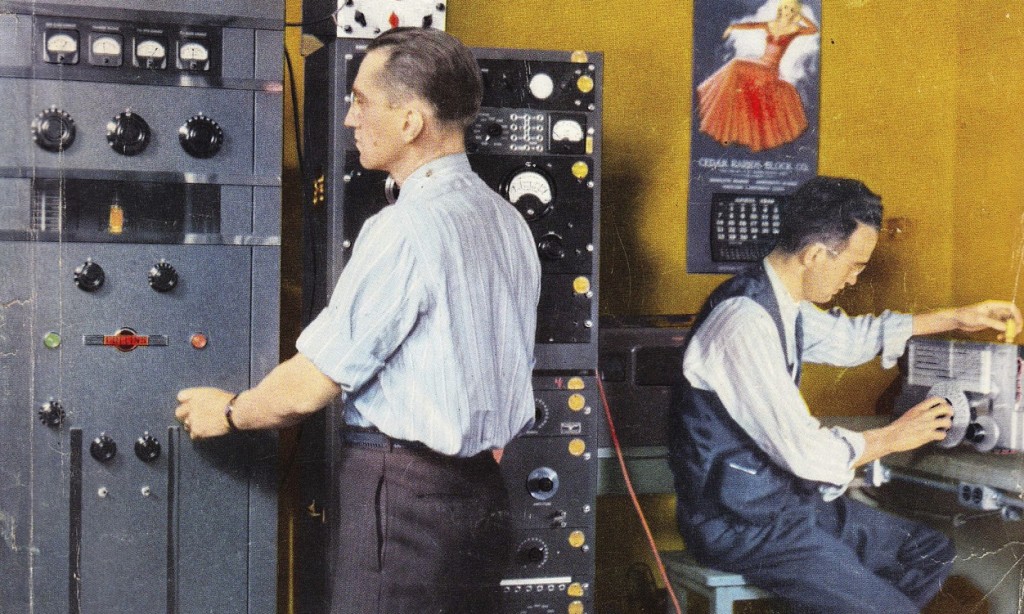 Download a four-page article from RADIO NEWS, November 1946, containing data and plans for constructing a surprisingly simple tube audio oscillator. Author is R.W. Ehrlich.
Download a four-page article from RADIO NEWS, November 1946, containing data and plans for constructing a surprisingly simple tube audio oscillator. Author is R.W. Ehrlich.
DOWNLOAD: SimpleTubeAudioOsc
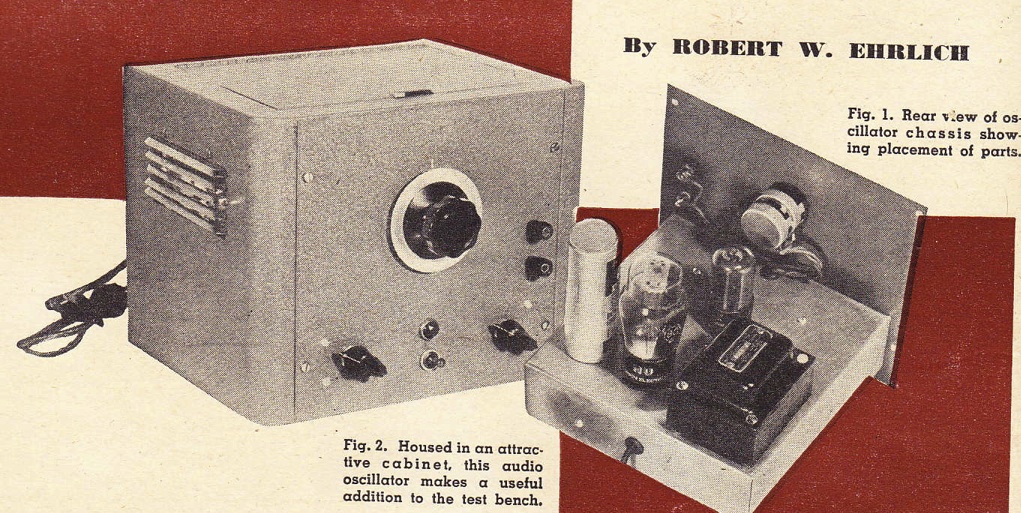 One 6SN7 tube plus a handful of caps, resistors, and pots (oh and a power supply). 12 of these would make the basis of a pretty interesting synthesizer. I was wondering what I was gonna do with the 100000 6SN7s I have accumulated. Why so many 6SN7s? It’s like the Whipped Cream And Other Delights of used vacuum tubes. At least one in every pile.
One 6SN7 tube plus a handful of caps, resistors, and pots (oh and a power supply). 12 of these would make the basis of a pretty interesting synthesizer. I was wondering what I was gonna do with the 100000 6SN7s I have accumulated. Why so many 6SN7s? It’s like the Whipped Cream And Other Delights of used vacuum tubes. At least one in every pile.
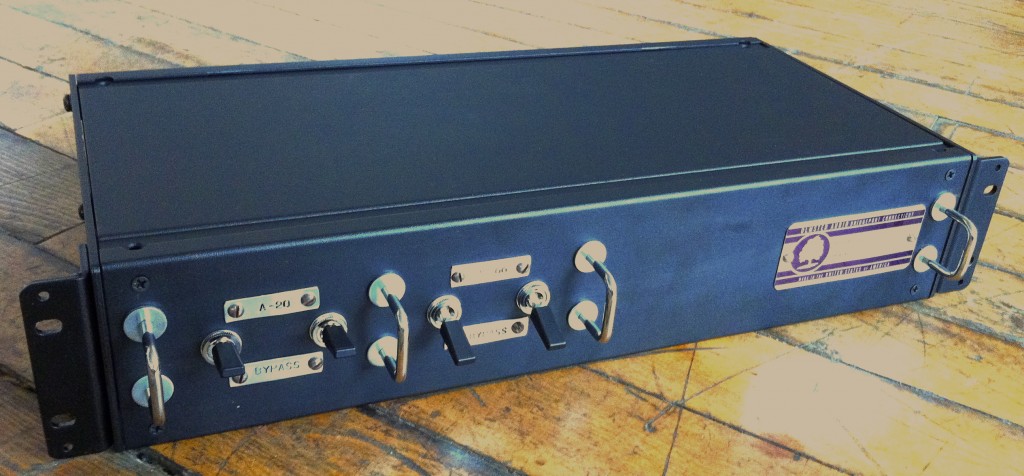 Recently shipped this bespoke four-channel unit to customer P.G. PG sent me a pair of UTC A20s and a pair of Triad HS-66 600:600 transformers; he wanted a finished piece that would allow him to switch the transformers in-and-out of a signal path easily.
Recently shipped this bespoke four-channel unit to customer P.G. PG sent me a pair of UTC A20s and a pair of Triad HS-66 600:600 transformers; he wanted a finished piece that would allow him to switch the transformers in-and-out of a signal path easily.
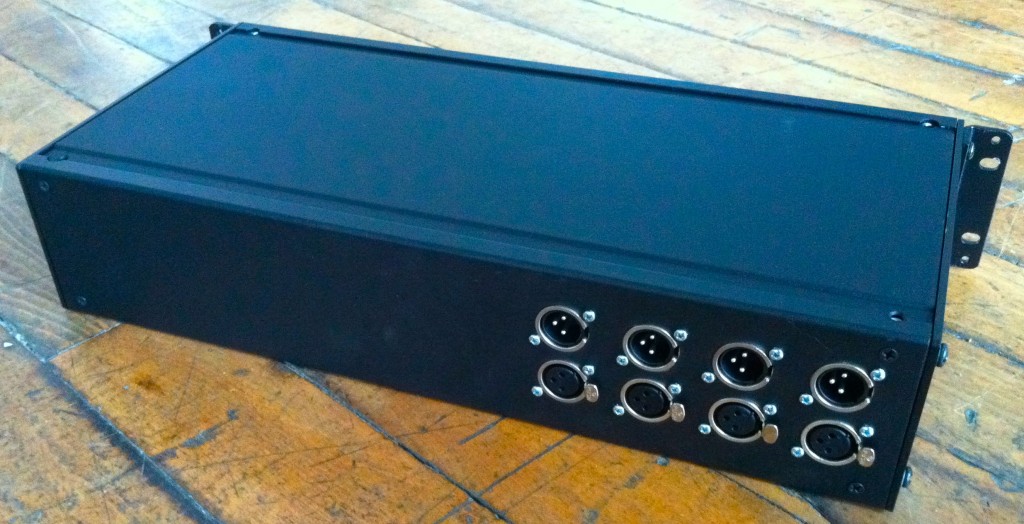 For an explanation of the ‘transformer-as-signal-processor’ concept, see this previous post concerning a similar custom build. P.G. wanted his unit built as a two-space chassis so that he could add a third pair of transformers in the future if he wished; the front panel was precisely measured and punched so as to allow this to be done in a visually harmonious manner.
For an explanation of the ‘transformer-as-signal-processor’ concept, see this previous post concerning a similar custom build. P.G. wanted his unit built as a two-space chassis so that he could add a third pair of transformers in the future if he wished; the front panel was precisely measured and punched so as to allow this to be done in a visually harmonious manner.
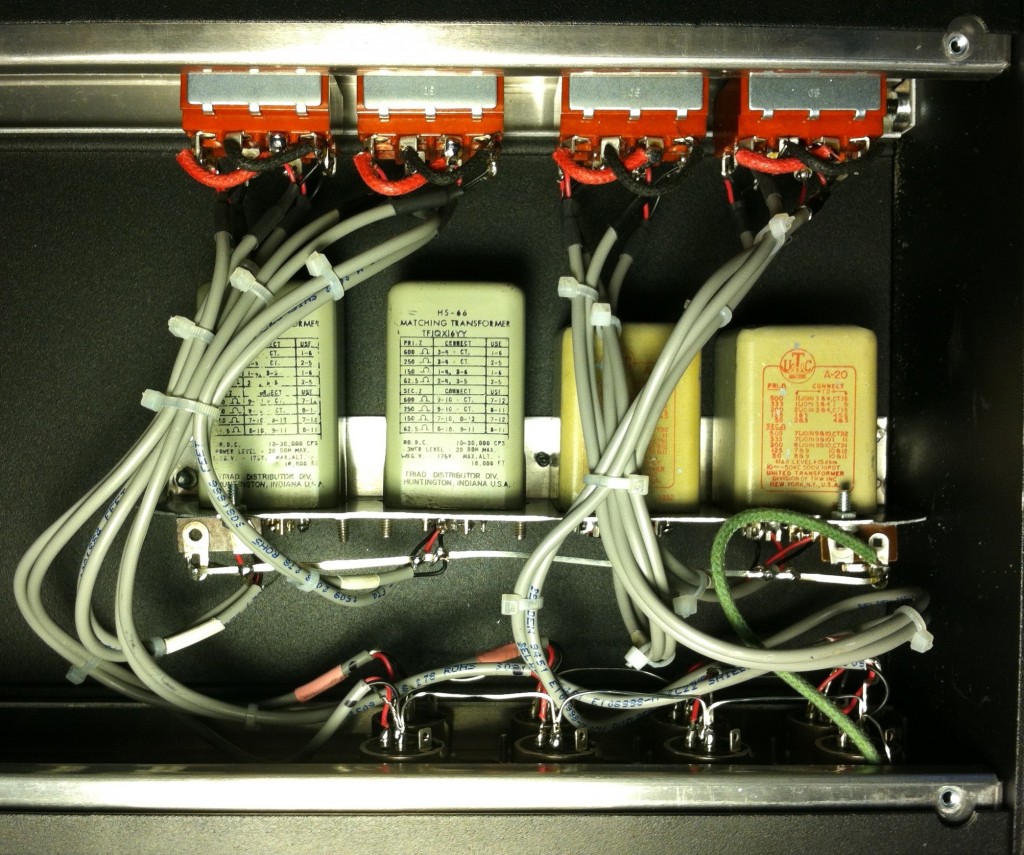 Above, the inside of the unit. Belden 9451 wire and the same 12,000 watt (no typo) 4PDT toggle switches as the prior build. So how does it sound? For those of you who are curious about commissioning or DIYing a piece like this, here are my impressions.
Above, the inside of the unit. Belden 9451 wire and the same 12,000 watt (no typo) 4PDT toggle switches as the prior build. So how does it sound? For those of you who are curious about commissioning or DIYing a piece like this, here are my impressions.
First, the ‘hard facts,’ measured using sine waves at +10db.
UTC A20: Insertion loss approx. 0.2 db. down 1 db at 12hz, down 1 db at
65khz. Otherwise flat.
Triad HS66: Insertion loss approx. 0.1 db. down 1 db at 10hz, down 1 db
at 60khz. Otherwise flat except for a bump up around 10k.
As fast as listening test (with music, not test tones): and this is obviously very subjective: the UTCs are very very subtle. Bass is little more organized but it’s really hard to say. They are just too perfect I guess. If they are run them at full protools level (+22) the user will likely hear some color, as it is outside their stated linear range. But at +10 there is little effect.
On the other hand, the Triad HS-66 definitely have a sound: at first I thought that they were bass shy, but the sweep test denies that. To my ears, they make everything sound more forward and aggressive.
Phono Equalizer Design Circa 1950
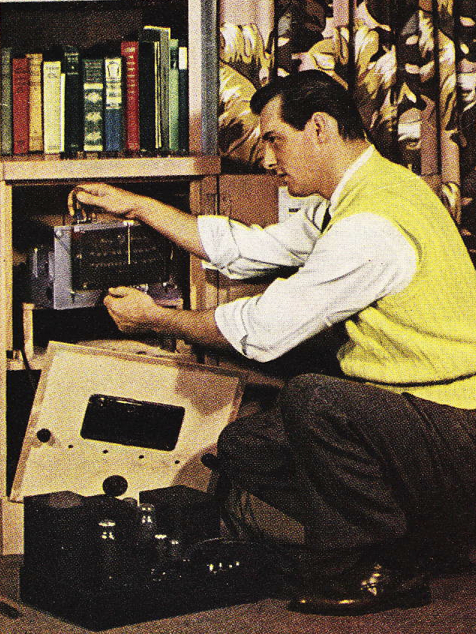 Download a two-page article from RADIO ELECTRONICS, April 1950, on the subject of Phono-EQ design:
Download a two-page article from RADIO ELECTRONICS, April 1950, on the subject of Phono-EQ design:
DOWNLOAD:PhonoEQdesign1950
These are not phono preamps, so-to-speak; they lack sufficient voltage gain to bring phono-pickup-level up to line level. Nonetheless some interesting info in here which might be useful to those of you DIYing tube EQs out there. An interesting artifact from the era prior to RIAA standardization.
There is still more work to be done
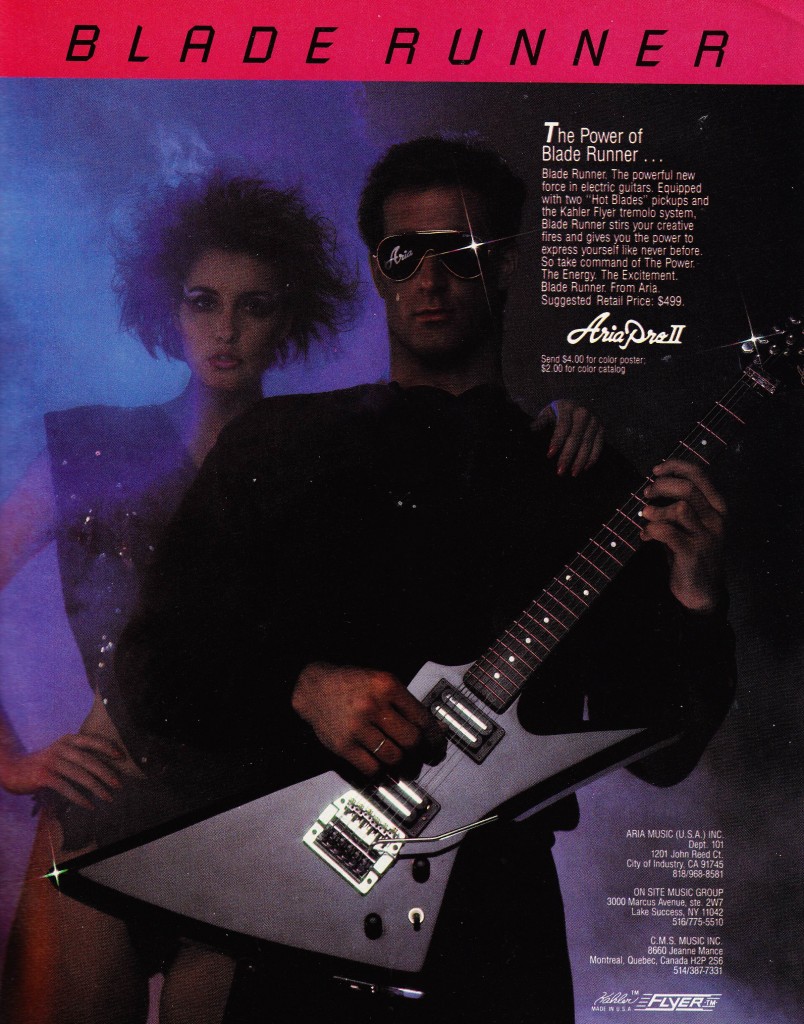 As I was packing my belongings for a new, quieter life in the Eastern Atlantic, I came across this curiosity. A Blade-Runner themed guitar. But. Not even the ‘famous’ (relatively speaking, of course) Guild-Brand Blade Runner Guitar. Close analysis of this obscure piece of content revealed a deep truth: there is still so, so much to be learned from digging thru endless piles of ancient audio-themed papers. I cannot stop. Yet. There is still more work to be done. Let us now examine the facts.
As I was packing my belongings for a new, quieter life in the Eastern Atlantic, I came across this curiosity. A Blade-Runner themed guitar. But. Not even the ‘famous’ (relatively speaking, of course) Guild-Brand Blade Runner Guitar. Close analysis of this obscure piece of content revealed a deep truth: there is still so, so much to be learned from digging thru endless piles of ancient audio-themed papers. I cannot stop. Yet. There is still more work to be done. Let us now examine the facts.
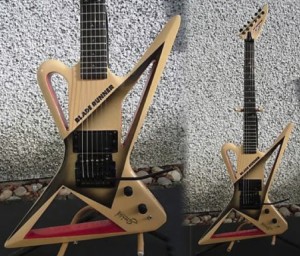 The Guild ‘Blade Runner’ (at left; source) utilizes the actual Blade-Runner-Film font on its body, suggesting that the Guild guitar was actually licensed by the film’s producers?
The Guild ‘Blade Runner’ (at left; source) utilizes the actual Blade-Runner-Film font on its body, suggesting that the Guild guitar was actually licensed by the film’s producers?
Initially, it seemed incredible to me that a second guitar-maker would enter the market with a guitar named after the film Blade Runner; which, as great a film as it is, features neither a guitar nor any guitar-music for its duration. What could explain this seemingly totally unnecessary redundancy in the guitar marketplace? Perhaps the answer is more complex than we have yet realized. Perhaps the ‘licensed’ GUILD-brand Blade Runner Guitar was all too content to align itself with the orthodoxy imposed by the film’s producers (the same producers, naturally, that insisted on the inclusion of the humanizing ‘voice-over’ in the film’s theatrical release). Perhaps the ARIA-brand Blade Runner guitar was part of an alternate explanation of events, one that perhaps comes closer to the truth?
*****************************************************************************************
Above: at left, Daryl Hannah as the character Pris in the film Blade Runner. At right: Some Model as Some Future Lady in the Aria Pro advert. The similarities beg the question: Is the man holding the guitar a surrogate for Roy Batty, the character with whom Pris was aligned in the film? Or is the man-with-guitar intended to represent Deckard, the protagonist of the film?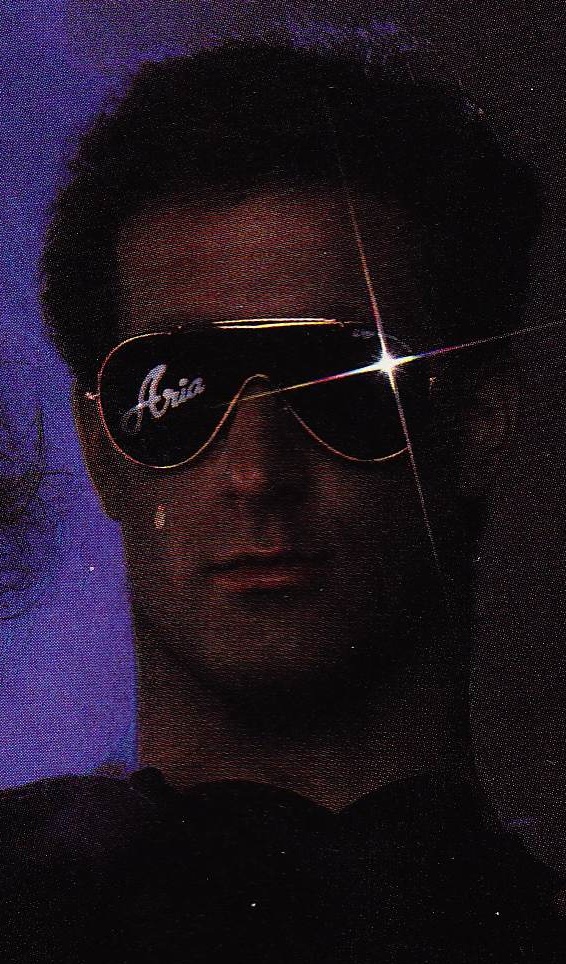 He definitely seems to have a stronger resemblance to Harrison Ford’s Deckard than to Rutger Hauer’s Roy Batty; yet the sunglasses are a confusing and highly suggestive twist. In the grand tradition of Blade Runner Conspiracy Theories, I would like to put forth the following thesis:
He definitely seems to have a stronger resemblance to Harrison Ford’s Deckard than to Rutger Hauer’s Roy Batty; yet the sunglasses are a confusing and highly suggestive twist. In the grand tradition of Blade Runner Conspiracy Theories, I would like to put forth the following thesis:
In the so-named ‘Aria Thesis,’ Deckard is the 6th Nexus replicant; here he is shown, before the crash landing, with Pris; Batty was in fact an interloper who usurped Pris’ affections after attempting to kill Deckard prior to the crash, in fact causing the crash. Batty attempted this murder by his indicated choice of killing technique: crushing the eyeballs into the brain. The Aria corporation signals this violation by covering Deckard’s violated eyes with their branded eyewear, eyewear that appears nowhere in the filmed narrative. In the Aria Thesis, the police force discover Deckard’s near-dead body; re-suit him with replacement eyes and unicorn dreams, and then set him to the task of capturing his former associates.
Please direct all question and/or comments about this post to these guys.
Good luck.
That’s it. I’m done.
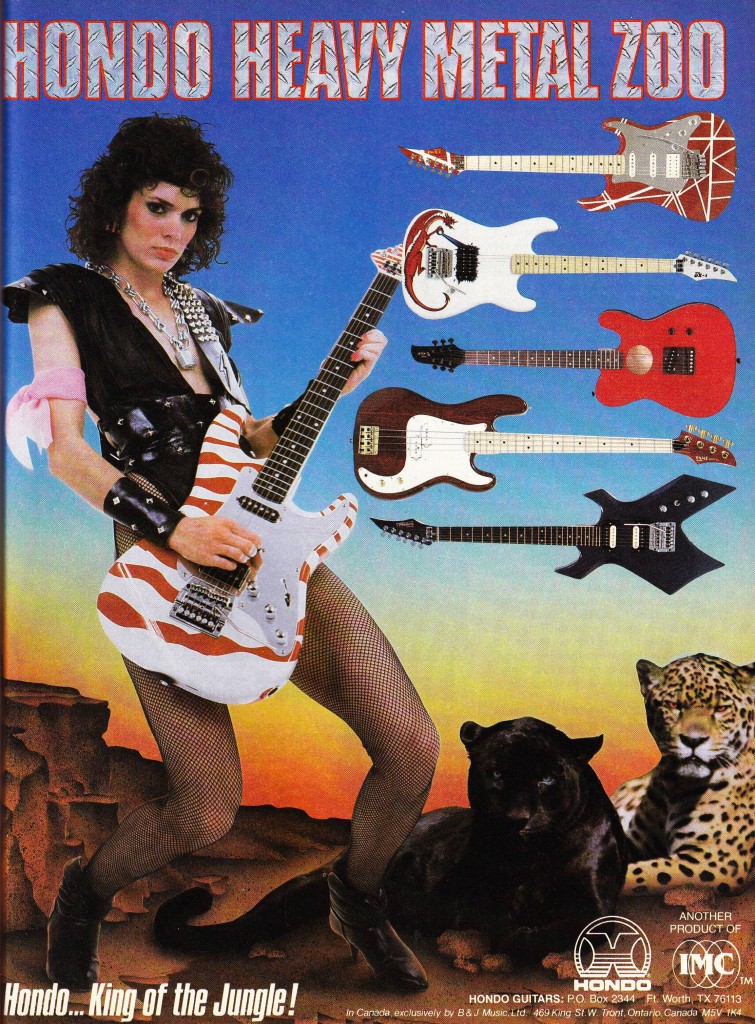 There is no reason to go on. I have found it.
There is no reason to go on. I have found it.
The all-time, ultimate, absolute pinnacle of guitar adverts.
Clearly, my work here is done. In case you missed it:
 Jungle animals with red ‘Laser-eyes’? Check.
Jungle animals with red ‘Laser-eyes’? Check.
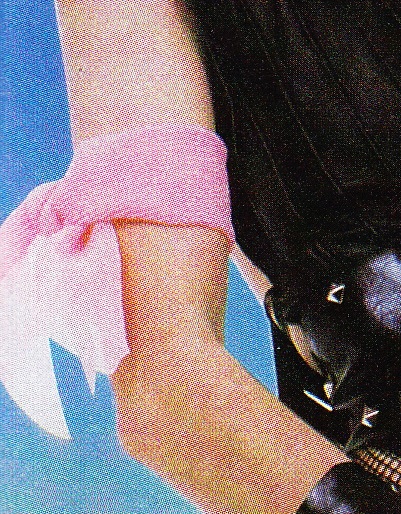 Pink Bandana tied above the elbow, to indicate that the wearer is looking to sell, rather than buy, (PCP? Ritalin? Advil Cold and Sinus?)? Check.
Pink Bandana tied above the elbow, to indicate that the wearer is looking to sell, rather than buy, (PCP? Ritalin? Advil Cold and Sinus?)? Check.
 ‘One-upping’ the classic EVH-style ‘Axe’ by adding a pointy headstock? Check.
‘One-upping’ the classic EVH-style ‘Axe’ by adding a pointy headstock? Check.
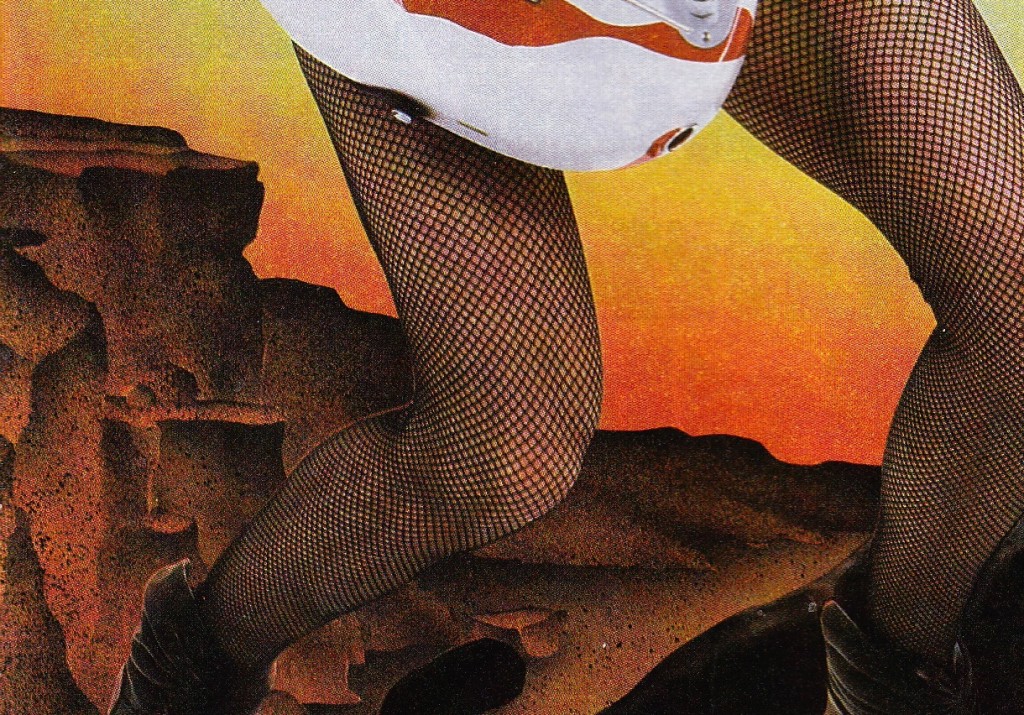 Utterly unconvincing photo-collage work that could only possibly correspond to the psychological landscape of a 12-year-old boy? Check.
Utterly unconvincing photo-collage work that could only possibly correspond to the psychological landscape of a 12-year-old boy? Check.
 ‘Heavy Metal’ typeset in actual-metal? Check. Let’s see that one more time.
‘Heavy Metal’ typeset in actual-metal? Check. Let’s see that one more time.
Thank you all for supporting this website over the past two years. I am retiring to a cottage on the Aran Island of Inis Mor. Take care.
Previous Hondo coverage on P S Dot Com
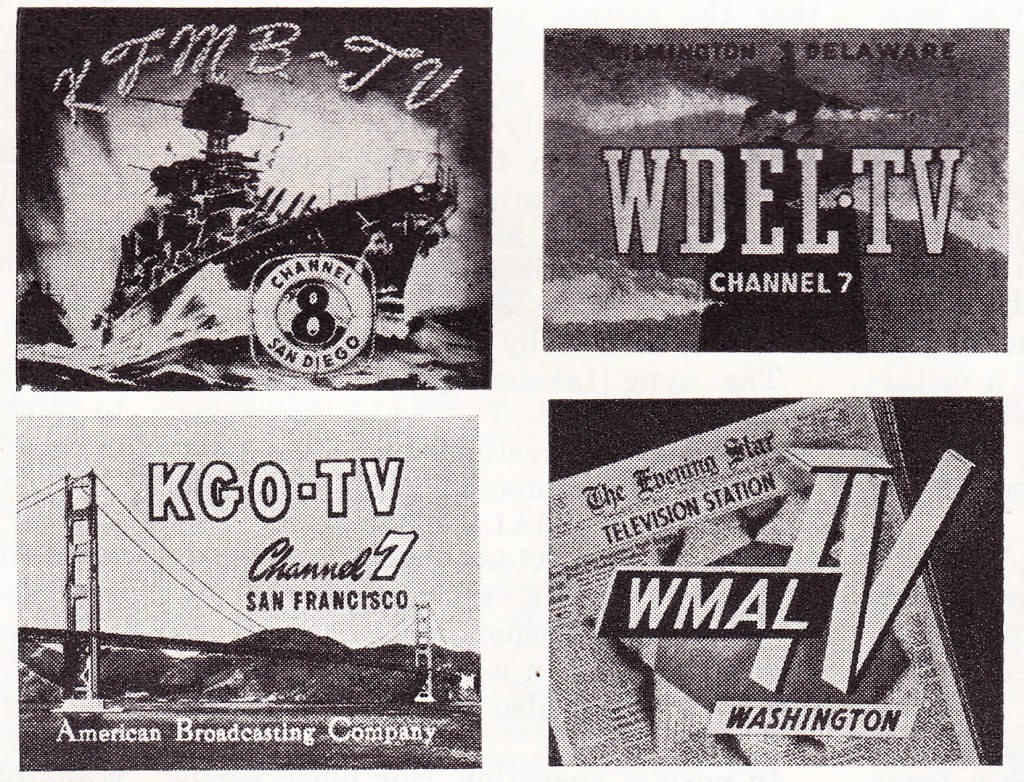 Today on P S Dot Com: a fairly comprehensive survey of television station ID graphics circa 1951. Widespread full-time telecasting did not take place in the US until 1948, so you are seeing the face of a relatively new industry here. I realize that this post has little to do with sound, but television, as it is broadcast, is at least 50% sonic; those of us who work in television are all-too-aware that we design programming for a distracted audience; I.E., programs and adverts are designed to deliver messages to audiences that can hear the set without necessarily seeing the screen. The importance of television broadcasts in creating the sound-environment of the twentieth century is immense. Anyway, here’s a trip back to the earliest days of mass-TV broadcasting in the US, and a fascinating look at how the early TV broadcasters saw themselves, as-it-were. If anyone has a link to an online archive of the sounds that accompanied graphics such as these, please do let us know.
Today on P S Dot Com: a fairly comprehensive survey of television station ID graphics circa 1951. Widespread full-time telecasting did not take place in the US until 1948, so you are seeing the face of a relatively new industry here. I realize that this post has little to do with sound, but television, as it is broadcast, is at least 50% sonic; those of us who work in television are all-too-aware that we design programming for a distracted audience; I.E., programs and adverts are designed to deliver messages to audiences that can hear the set without necessarily seeing the screen. The importance of television broadcasts in creating the sound-environment of the twentieth century is immense. Anyway, here’s a trip back to the earliest days of mass-TV broadcasting in the US, and a fascinating look at how the early TV broadcasters saw themselves, as-it-were. If anyone has a link to an online archive of the sounds that accompanied graphics such as these, please do let us know.
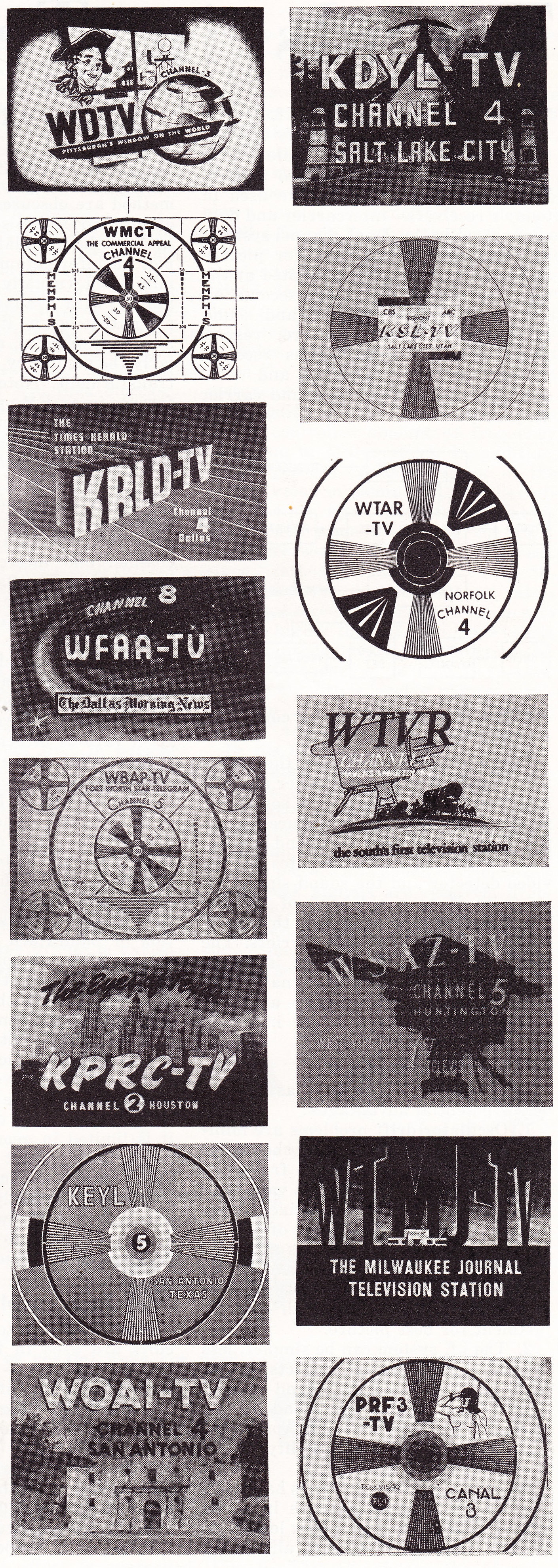
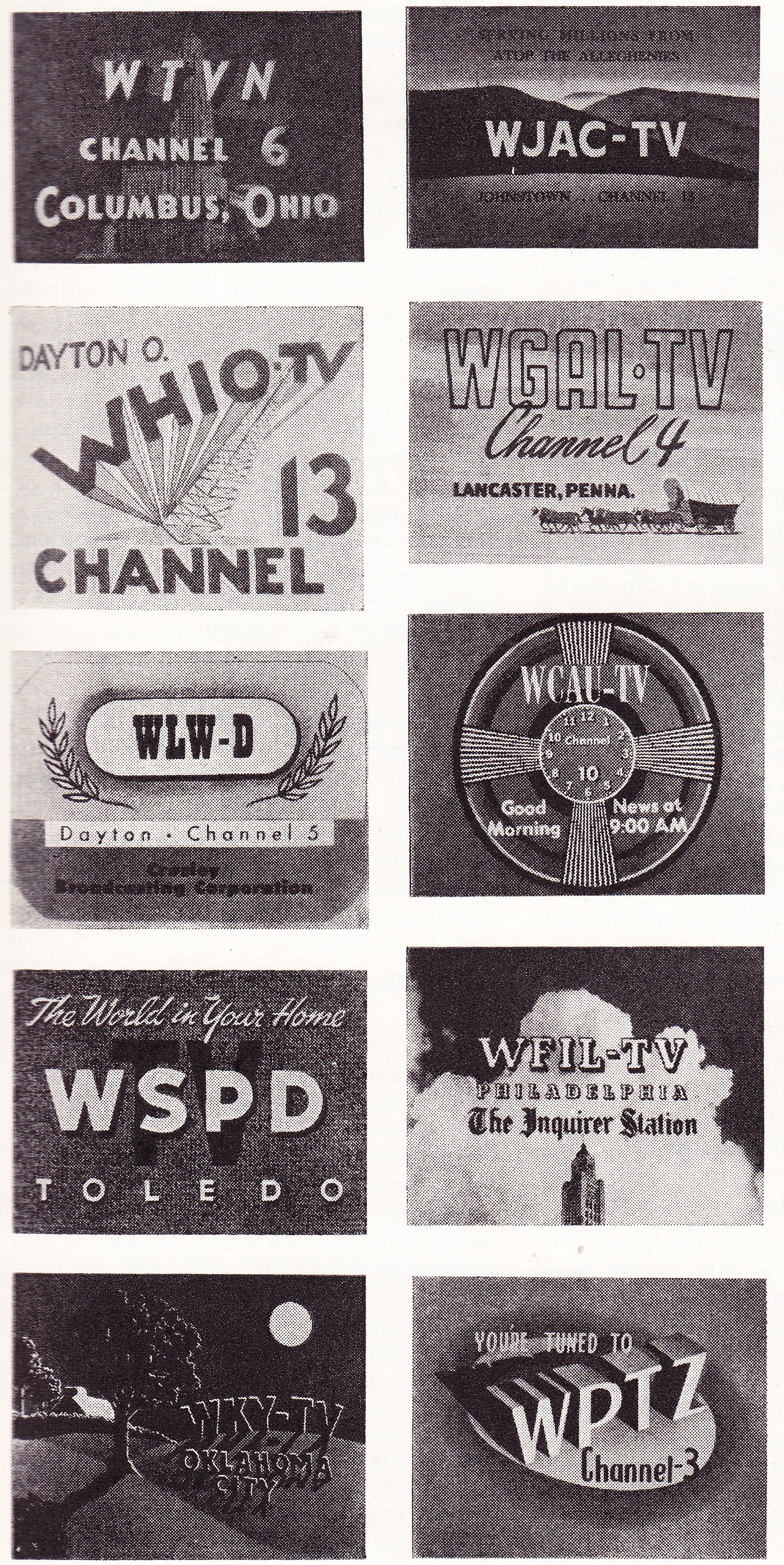 Many, many, many more follow: click the link below to READ ON…
Many, many, many more follow: click the link below to READ ON…
